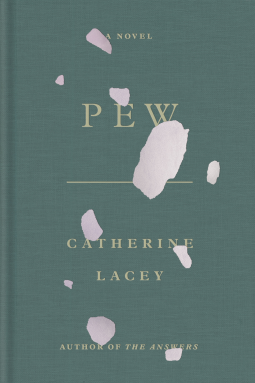 |
Evelyn A. Greenwood Ramer and daughter
Joyce Adair Ramer |
July 26, 1931 was the birth day of my mother Joyce Adair Ramer to parents Lynne O. Ramer and Evelyn Adair Greenwood. She was their first child, born eleven months after their marriage, when my grandmother was only 17 years old.
 |
| Joyce Adair Ramer |
Mom was born in Kane, Pennsylvania where my grandfather was a high school teacher and athletic director. She was baptized at Tabor Lutheran Church on August 30.
 |
| Mom's baptismal certificate |
The family lived at 218 S. Fraley St, Kane, PA.
 |
| photo of her childhood home taken by my mother |
 |
| Mom at her Kane home |
In 1934 my aunt Nancy was born.
 |
| Nancy and Joyce Ramer |
 |
| Joyce and Nancy Ramer |
 |
| Joyce and Nancy Ramer |
 |
| Mom's Kindergarten Class in Kane, PA |
In 1935 twins Don and Dave were born.
 |
| Mom's twin brothers Don and Dave Ramer |
My grandfather was born and raised in Milroy, PA and the family visited his childhood home every year. After the death of his grandmother and mother, he was raised by his mother's siblings, including Annie Smithers. The photo below shows his family also visited him.
 |
Evelyn, Charlie Smithers with twins Don and Dve, Annie Smithers,
Joyce and Nancy in front |
 |
| Joyce, Nancy, Don and Dave |
In 1941 my grandfather lost his teaching job. The family moved in with mom's Greenwood grandparents who lived in Troy, NY. Then my grandfather found work as an engineer at the Chevrolet Aviation Engine plant in Tonawanda, NY. The family moved into the Sheridan Project, wartime housing. Gramps taught at the University of Buffalo and was a deacon in the Episcopal Church.
 |
| Mom in the Projects |
In the Projects she met her lifelong best friend, Doris.
Mom loved the Big Band music, especially Glenn Miller, and was a jitterbug dancing queen at the Project dances.
 |
| Mom and Dad |
Mom saw Gene Gochenour and went all-out to get his attention. They dated from the time they were sixteen.
 |
| Gene Gochenour and Joyce Ramer |
 |
| Joyce Ramer and Gene Gochenour |
 |
| Mom's graduation photo |
Six months after mom's graduation she married my dad on January 6, 1951. It was a simple wedding, mom wearing a suit.
 |
Mom and Dad's wedding photo. Mom's sister
Nancy is at her side. |
They moved into my dad's family home, which was an 19th c farmhouse converted into apartments. Mom worked at Remington Rand in Tonawanda on a
comptographer. Dad worked in the gas and service station his father had built.
 |
the station built by my paternal grandfather
on Military Rd and Rosemont in Tonawanda NY |
 |
1865 Military Road, where I was born, house my grandparents,
my family, and my dad's sister's family |
I was born In July, 1952.
 |
| Nancy, age 3 |
In 1959 my brother was born.
 |
| Me and my brother |
Mom suffered three miscarriages between my brother and I.
At sixteen, mom had been diagnosed with psoriasis. After each pregnancy her psoriatic arthritis worsened. Over the years she lost more joint movement, unable to move her neck, her hands frozen.
 |
| Mom and Dad in the 1970s |
By the birth of her first grandchild, Mom looked much older than her fifty-five years.
 |
| Grandma Ramer, our son, and Mom in 1988 |
 |
Mom embroidered this clock and dad made the case
from a kit bought in the early 1960s |
Mom took art classes in adult education when I was a child. I remember watching her make her first paintings. She told me what she was doing and I learned to mix oil paints to make new colors at her side.
 |
| painting by my mother |
I recently found these paintings Mom made for our son before his birth.
 |
| The Royal Oak house when we moved in |
In 1963 we moved to Michigan and my parents bought a house in Royal Oak. After the death of my Grandpa Ramer in 1971, my grandmother moved in with my parents and in 1972 they bought a house in Clawson.
 |
| The Clawson house |
We lost Mom on April 4, 1990 to cancer. We lost Dad to non-Hodgkins lymphoma in 2008. I inherited the Clawson home and we moved in after retirement. The house is haunted with happy memories. Mom putting on her lipstick at the bathroom mirror. Dad swimming in the above ground pool with our son. The knick knack shelf of great-grandmother's Hummels. Mom's paintings hang on the walls.
I love to look at mom's old photographs and her happy jitterbug days.
 |
| At Sheridan Park, Tonawanda NY |
 |
| At her home in the Sheridan Projects |
 |
| Mom and Dad |
 |
| at her Greenwood grandparents home in Troy, NY |
 |
| In the Sheridan Projects |
 |
| In the Sheridan Projects |
Mom loved to read and stayed up into the wee hours of the morning to enjoy the quiet house and her book. She loved music, including classical. Mom was creative. She was generous. She had compassion. Her life was a struggle with a progressive disease that required hours of personal care and left her crippled for months of the year. She was stubborn and would not budge. She loved us.
 |
| At our home on Military Rd in Tonawanda NY |
 |
| Mom and Dad 1969 |


























































